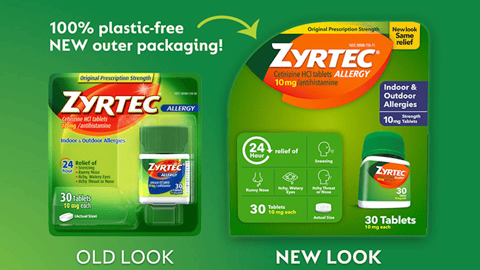Unilever Combats Food Waste with New Temperature-Sensitive Smart Mayonnaise Jars
In an effort to reduce food waste, Unilever brand Hellmann’s is trialing smart mayonnaise jars that indicate when fridge temperatures are at the optimum levels for food freshness.
Designed by illustrator Ellen Porteus, the labels use thermochromic ink to show hidden pictures when fridge temperatures drop below 41°F. Many food groups – including milk, one of the most commonly discarded products – can last up to three days longer when stored at cooler temperatures, the company says. The trial jars will be rolled out as part of Unilever's Make Taste, Not Waste campaign.
Recent Unilever research finds that influencers have the single biggest impact on customers’ sustainability choices, with 78% of respondents listing them as the source they look to for eco-friendly inspiration and advice. Close to half (48%) say they are influenced by television documentaries, 37% by news articles, while government campaigns influence only a small proportion (20%). Specifically, 83% of respondents say TikTok and Instagram are the leading social media sources to look to for eco-friendly content.
- See Also: Watch List: The Ugly Company
It makes sense, therefore, that Hellman’s has sent trial prototypes of the smart jars to key influencers to raise awareness during Food Waste Action Week. The brand’s partner, NGO WRAP, has also set up an online tool outlining how to set fridges to their correct temperature to reduce food waste.
Commenting on the findings, Conny Braams, Unilever’s chief digital and commercial officer, said Unilever had put sustainability at the heart of operations, and knowing what they know about consumer motivations can help their brands tailor their efforts to fit with what resonates most. “What we hear from consumers is that living sustainably is a constant, overwhelming effort, and many feel ‘my act alone won’t count anyway,’” said Braams. “Our ambition is to continue to learn and improve the sustainability content produced by our brands and support the creators we work with. Together, we are learning what is all likes and no action, versus content that can help make sustainable choices simple and preferred.”
“Every year more than 4.5 million tonnes of perfectly good food goes to waste in our homes, which could have been eaten […] Incorrect storage is a key trigger for food going off and getting the fridge temperature right can help food stays fresher for longer,” said Catherine David, director of collaboration and change at WRAP.
Sustainable packaging has been a trending topic in consumer goods for some time now. In an effort to reduce its dependence on plastic, Nestlé will pilot paper-wrapped versions of their four-bar KitKat chocolates across select stores in Australia. In a similar vein, Kraft-Heinz piloted a paper-based ketchup bottle last year.
Amazon, too, has been working to reduce its dependence on single-use packaging, leveraging machine learning technology to reduce waste and ensure products are packaged in properly-sized boxes or mailers. So far, the algorithms have reduced the use of corrugated cardboard boxes by over 35% in North America and Europe.





